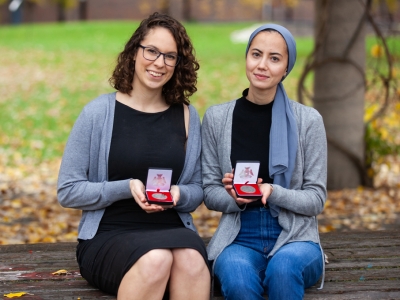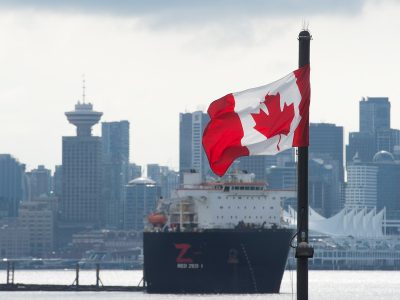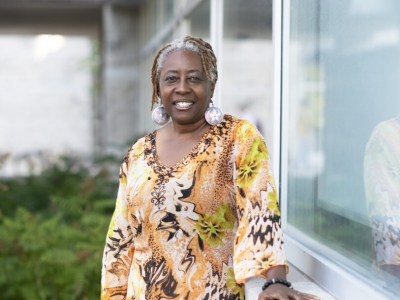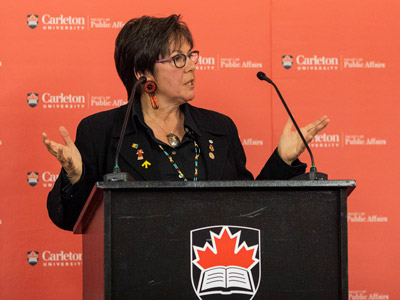By Lowell Gasoi
This article is republished from The Conversation under a Creative Commons licence. All photos provided by The Conversation from various sources.
Lowell Gasoi is an instructor in communication studies at Carleton University.
The current Israel-Hamas war has dominated the news for the past few months. As reports of military machinations and diplomatic efforts have gained attention, the art world has struggled with responses to the horrors of this war.
For example, controversy and calls for transparency and accountability followed the departure of Anishinaabe-kwe curator Wanda Nanibush from the Art Gallery of Ontario (AGO). The departure was apparently related to her expressed opinions on the war.
After the Royal Ontario Museum tried to change a Palestinian American artist’s work, Jenin Yaseen staged a sit-in and others protested.
I have been teaching and writing about the “art world” — what sociologist Howard Becker calls the network of artists, art institutions, funders, patrons and audiences — for years, and researching how artists navigate their thorny relationship with contentious political moments.
Policies and regulations can serve artists, but can also engender a lack of trust and create administrative burdens that impact the healthy functioning of artists and organizations.
Endeavouring to speak truthfully, meaningfully
The Globe and Mail reported some Canadians “active in a support group of the Israel Museum in Jerusalem” expressed concern to the AGO, and that one signatory to a letter said the letter didn’t call for Nanibush’s departure but rather for “antisemitism training and for the AGO to make use of the International Holocaust Remembrance Alliance working definition of antisemitism.”
If the gallery did try to silence Nanibush, critics have reason to be concerned about how they reacted as the curator and others in the art world endeavoured to speak truthfully and meaningfully in a time of crisis.
In a statement, the AGO’s director and CEO Stephan Jost expressed the gallery’s support for Indigenous artists and a need to “reflect on our commitments to the Truth and Reconciliation Commission Report …”
He acknowledged cultural institutions are “being asked to better define the rights and limits of political and artistic expression in a locally diverse but globally complex environment” and that “intense discussion” also raises questions about good governance.
Rights, limits, regulation and the purpose of artists’ work are what is at stake in this discussion. An investigation is underway to see how the gallery’s policies may have impacted the board’s decision-making.
People trying to create and speak truth
How people assess the value of policies and regulation affecting the art world depends on how much they feel the art world should, or should not, reflect political realities.
Some might suggest that artists should entertain and enlighten us but stay away from contentious issues.
I believe artists have a unique role, different than that of journalists, political leaders or even documentary filmmakers. Beyond parsing the facts of a situation or deliberating and brokering political solutions, artists work to bring human richness and complexity to experiences like conflict and strife.
Art and our lives
Thinking about “art worlds” as “patterns of collective activity,” as Becker does, helps us to think about art in relationship to our social and political lives, and the conditions under which artists create.
Art schools, professional organizations, galleries and performance spaces all play a part in enabling some artists and their messages to shine, whether through financial support, attention or time — while constraining or even silencing others.
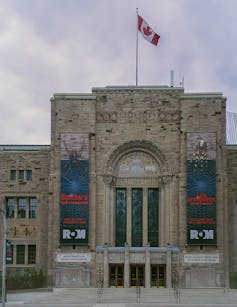
(Shutterstock)
Museum and gallery spaces, frequently dependent on government and philanthropic funding, curate and elevate certain artworks and in so doing mediate relationships and foster cultural dialogue between governments and pluralistic communities of citizens. At the same time, they prescribe behaviours and actions that constrain both artists and the public perception of their work.
In this way, the support systems around artistic work have political implications, just as much as the art itself may have.
Discipline via funding
As I examined in my doctoral research, the Summerworks Theatre Festival briefly lost funding from Canadian Heritage in 2011 after staging playwright Catherine Frid’s controversial play Homegrown.
The play critiqued the reach of the Anti-Terrorism Act and the use of solitary confinement as it examined the story of one man convicted of participating in a terrorist group. This was after a high-profile 2006 RCMP investigation saw 18 Muslim individuals accused of terrorism. (Charges against seven people were stayed or dropped, while four people were convicted). Some accused the play of being pro-terrorist.
Artists responded to this institutional censure by staging readings of the play to support the festival.
The art world will find pathways to speak its own truth in the face of such pressures.
For instance, as the Globe and Mail reported, the Belfry Theatre in Victoria made a recent decision to cancel its run of the Israel-set play The Runner. But Vancouver’s PuSh Festival is sticking by plans to run the play as a part of its program along with other works, including the immersive installation Dear Laila that depicts a model of one artist’s former home in the Yarmouk Palestinian refugee camp.
When political pressure closes one door, the art world will often seek to open another, though we have yet to see how this might play out in the case of the AGO and Nanibush.
What do we want from our artists?
In the face of numerous wars, the climate emergency, housing and food insecurity, this is a challenging time. People around the world face what some scholars and activists have called a “polycrisis.”
Artists represent and reflect this social and political upheaval. Banksy scrawls murals on the blasted Ukrainian cityscape. Theatres across the world stage performances or screenings — like The Gaza Monologues — to try to represent Palestinian voices.
Especially in a time when trust in our political leaders and institutions continues to wane, artists, arts leaders and policymakers face daunting but critical questions about making ethically sound decisions.
If the public trusts the art world to do their work with rigour and honesty, artists and arts institutions can be a community of voices expressing diverse perspectives on our collective humanity, reflecting suffering and the power of resistance to violence in this polarizing conflict.
We must critically assess the value of the arts and of artists to perform this important work. And we should be mindful of desires to discipline the art world at a time when its voices are so deeply needed.
![]()
Monday, January 8, 2024 in The Conversation
Share: Twitter, Facebook
